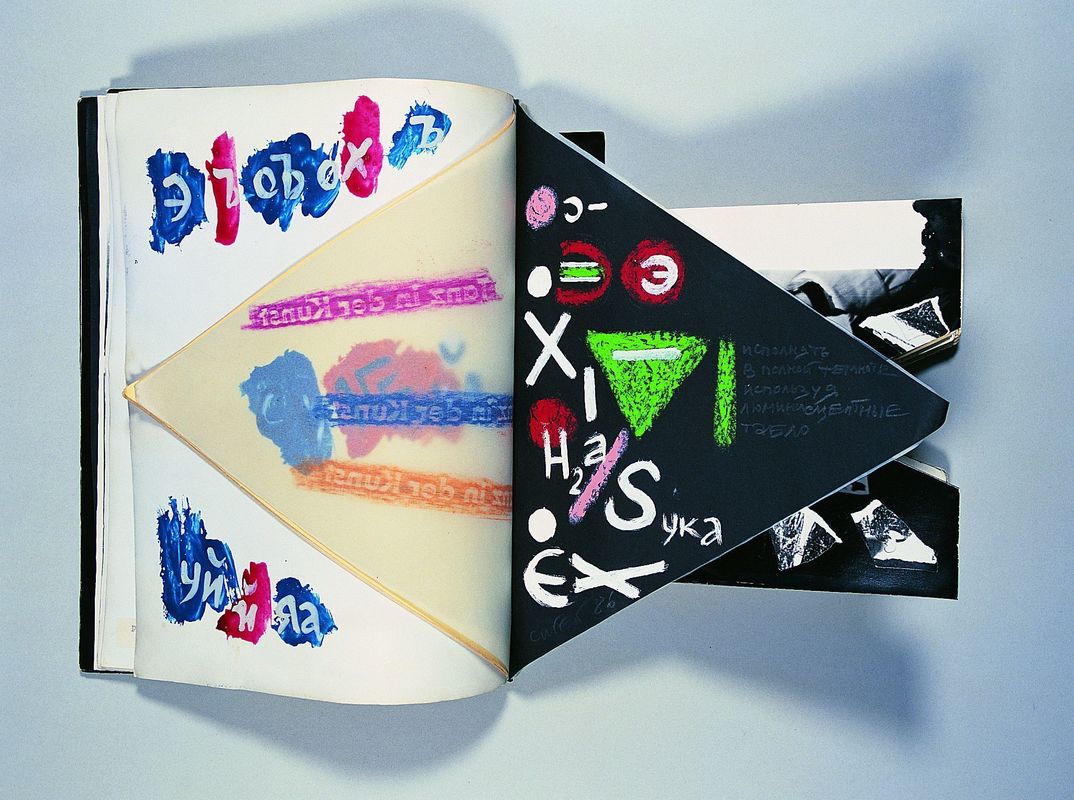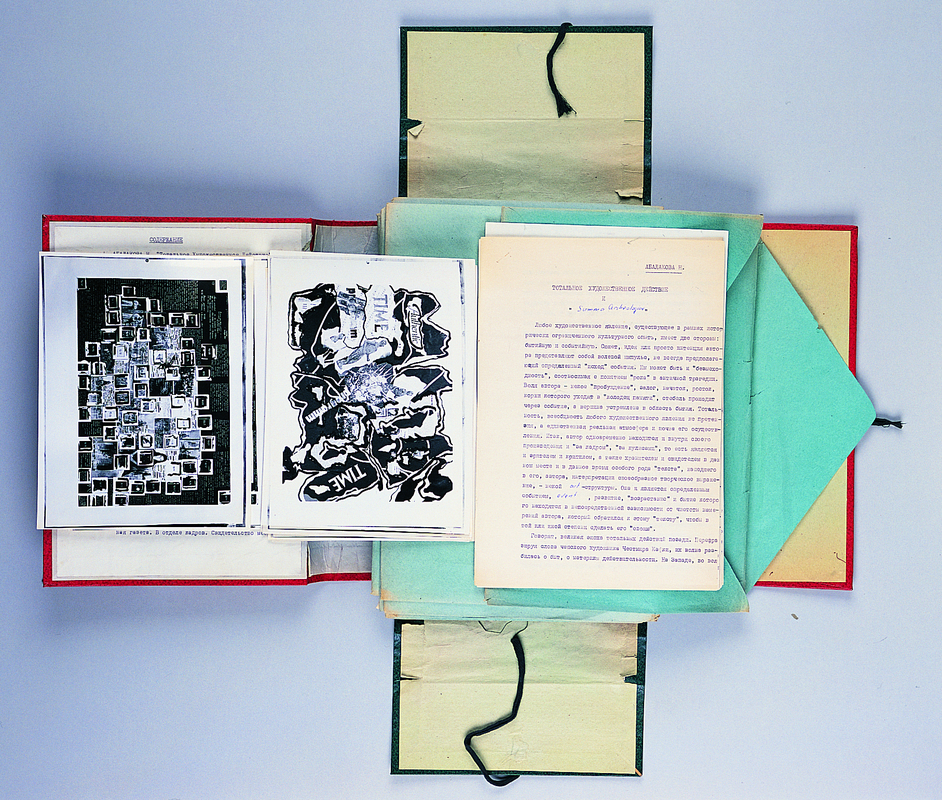
Personal archives of non-conformist artists that make up part of Samizdat Manuscripts and Papers Collection of The Research Centre for East European Studies reflect the heterogeneity of the underground art scene in the Soviet Union and reveal the connections and intersections that developed between art and literature under the regime of state censorship, which cannot be fully understood outside of the political context of the era.
In the 1940s, poet Nikolay Glazkov produced a self-published collection of poems illustrated with drawings and collages and which, to imitate “real” books, had a colophon saying that it was released by “Samsebyaizdat” [“Myself by Myself Publishers"]. This is believed to have been the beginning of samizdat. Whether that was true or not, Glazkov’s publication marked the rise of the first generation of non-conformist poets who sought self-expression beyond the limitations set by the state. Nikolay Glazkov’s self-published book and similar works have been preserved in the archives of Albert Rusanov and Yury Abyzov.
In the 1950s, samizdat became a default cultural and lifestyle choice for the poets and artists of Lianozovo Group, including Vsevolod Nekrasov, Genirkh Sapgir, and Igor Kholin. In their works and methods, it is easy to see similarities with the Western cultural scene-similarities that had seemed unthinkable in the first years after the Iron Curtain separated Soviet culture from the West. Early poetry collections, correspondence, photographs, audio and video recordings of the time offer insight into the group’s cultural scene and the way their contemporaries received experimental poetry-blank verse, concrete poetry and even graphic art.
The archive of artist Anatoly Brusilovsky containing his correspondence with artists, poets, and publishers, offers another opportunity to take a closer look at the Soviet non-conformist art of the 1950s to the 1970s.

Sabine Hansgen’s archive is focused on the Moscow underground art scene of the 1970s and 1980s. Created in the early 1980s, the Moscow Archive of New Art (MANI) offers access to works by some of the key artists of Moscow non-conformist art, and in particular Moscow conceptualism, including Ilya Kabakov, Nikita Alekseev, and Andrei Monastyrsky. The archive also features several photographic series documenting performances and happenings organized by the artists.
The Research Centre’s collection also features samizdat publications produced outside of Moscow and Leningrad. Some of the most interesting items in the archive include thirty-six issues of Transponans, a literary journal with a circulation of five copies published in Yeysk by the Sea of Azov throughout the 1980s. The format of the periodical continuously evolved-often within one issue-but each copy, containing texts, original drawings, and photographs, is a work of art in its own right. The Transponans archive was donated to the Research Centre by its editors and publishers Ry Nikonova and Sergey Sigey.
Another key archive in the Centre’s collection is Boris Birger’s personal archive that contains his early sketches, drawings, and paintings as well as manuscripts, notes, handmade masks and dolls, a great number of photographs, and correspondence dating back to the pre-war years. The Centre continues to study alternative art and cultural movements and contemporary practices similar to samizdat.
[Sources include Gasan Gusejnov’s article: Unabhangige Kultur. //UdSSR/Russland. Das Archiv der Forschungsstelle Osteuropa. Bestande im Uberblick: UdSSR/Russland, Polen, Tschechoslowakei, Ungarn und DDR. Hg. Wolfgang Eichwede. Ibidem-Verlag. Stuttgart, 2009. P. 29.]